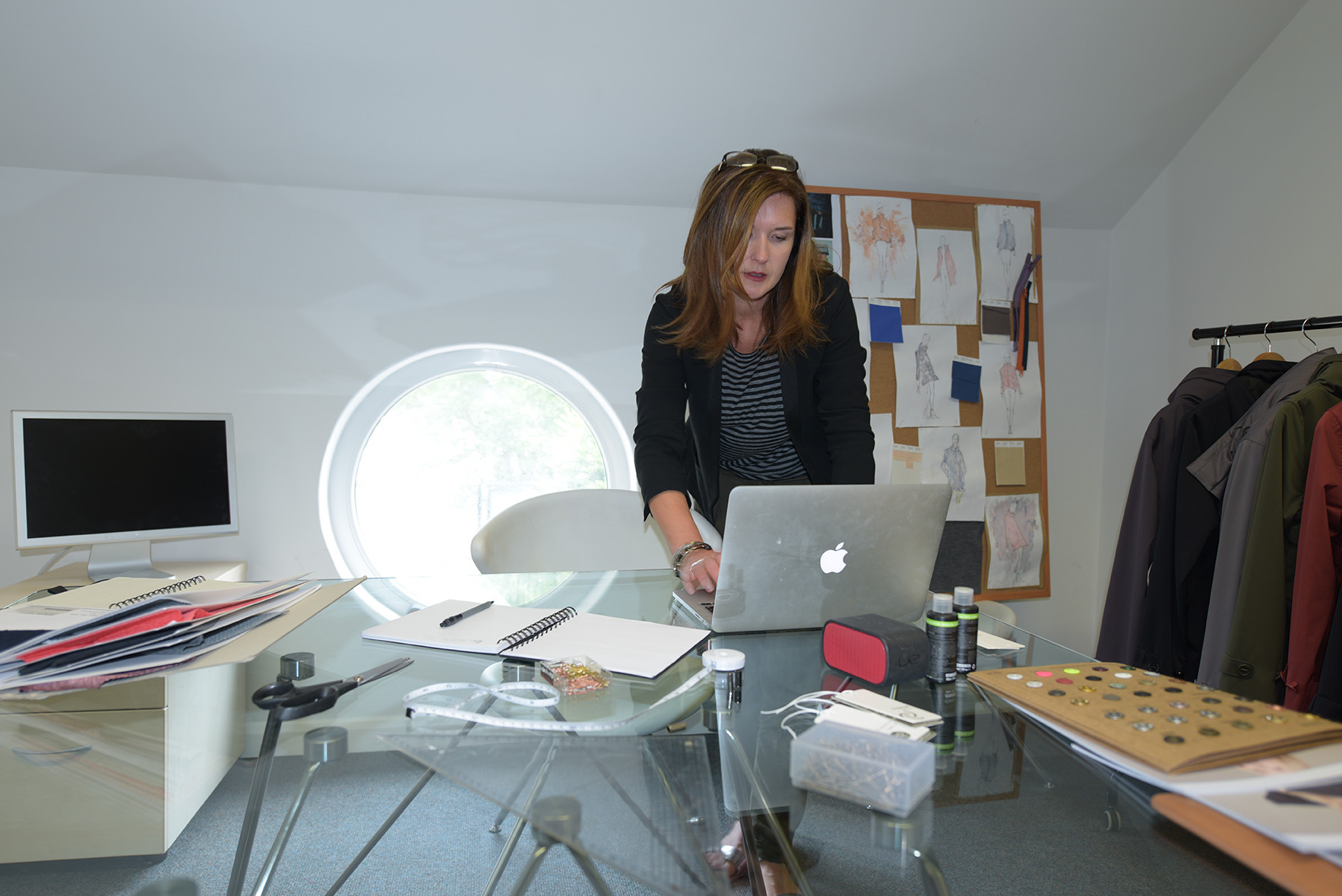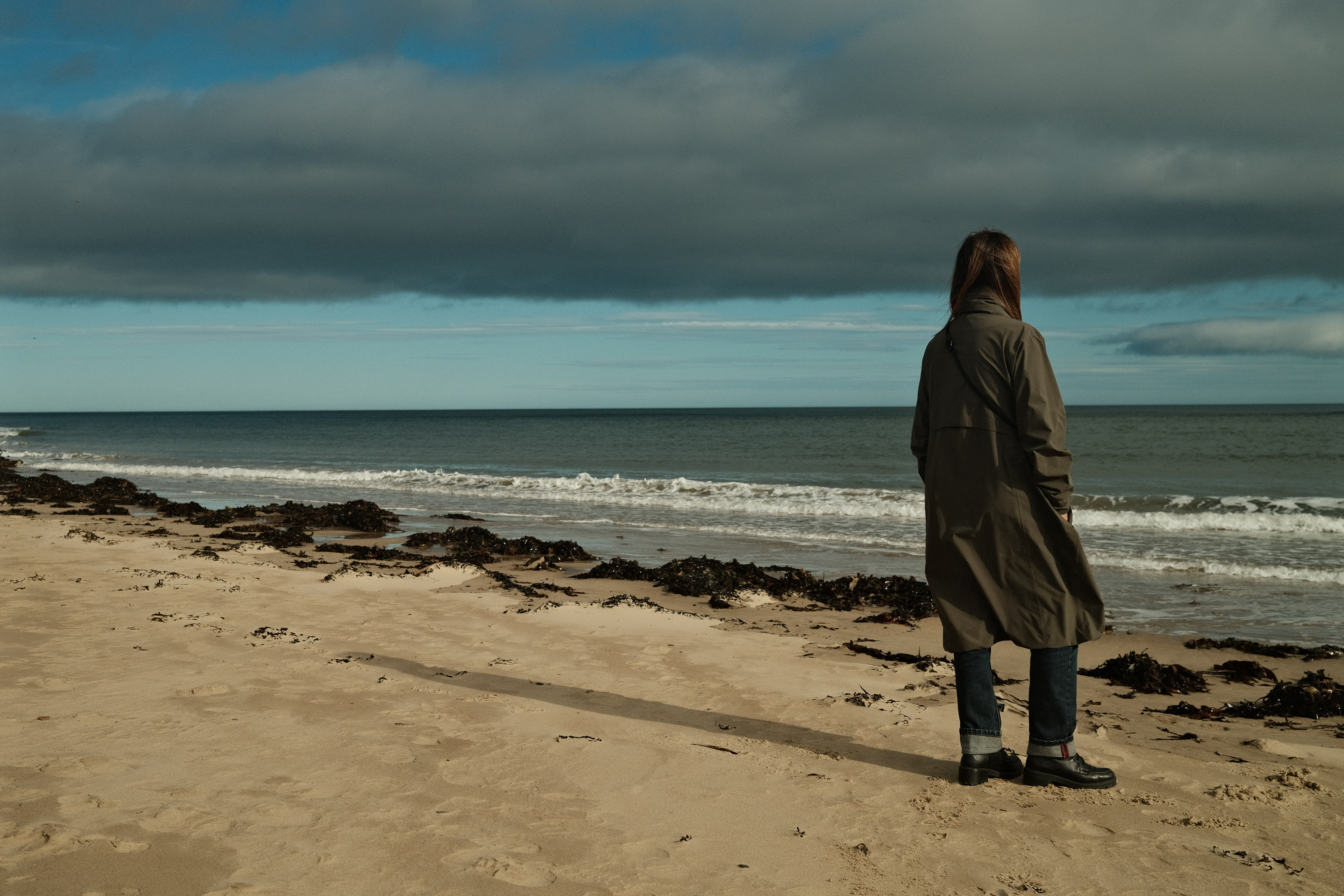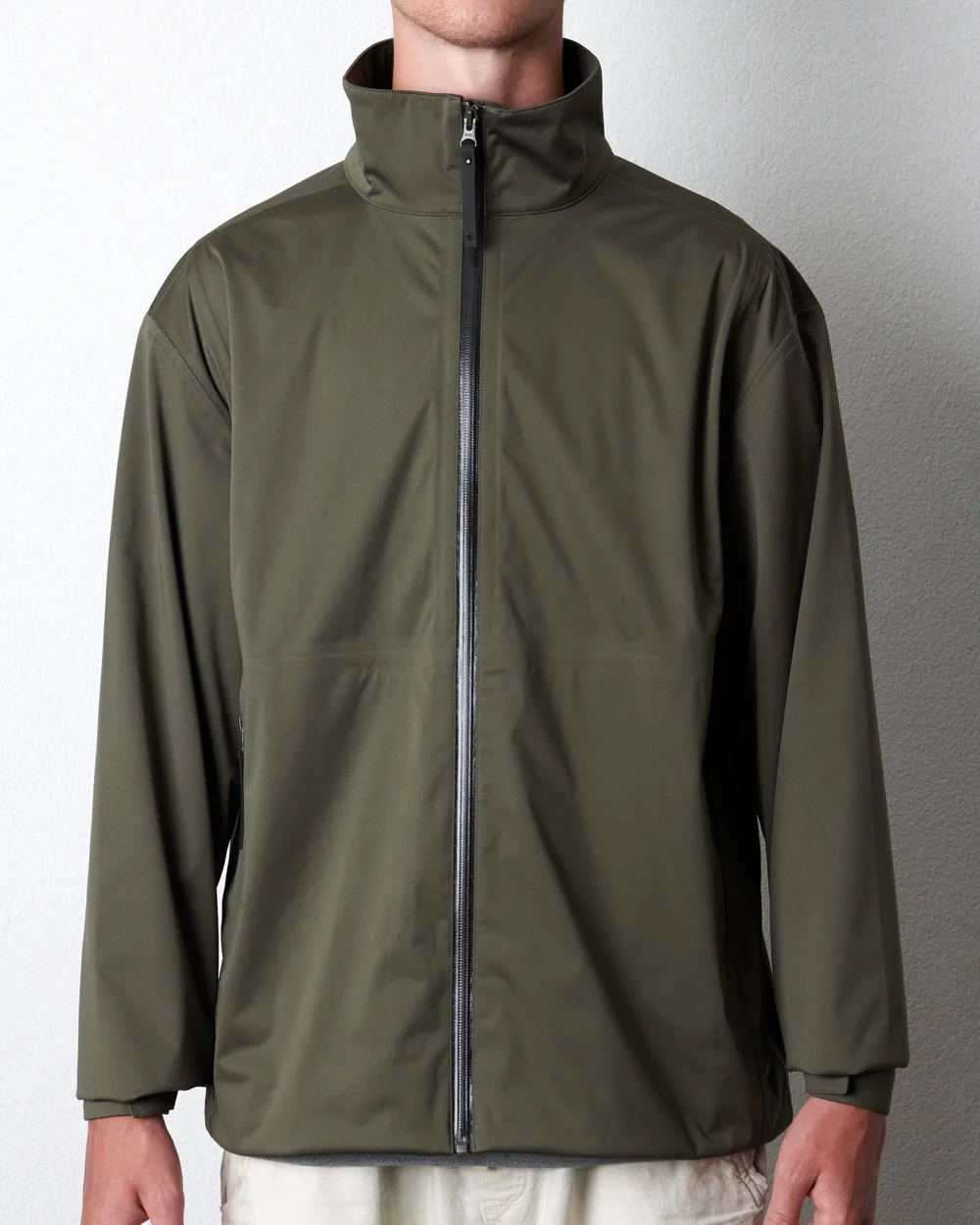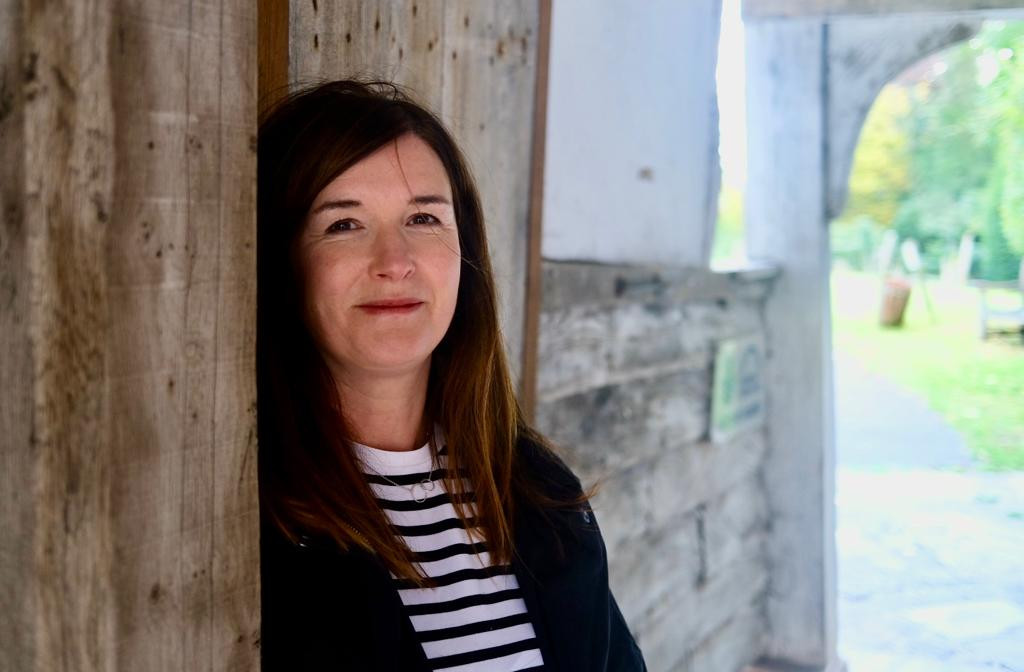
Rebecca McElligott spent over a decade as Global Apparel Product Director at PING before founding Protected Species, a performance wear brand that creates technical waterproofs with style.
Her products bridge the gap between on-course functionality and everyday wear, with collaborations including Sounder Golf.
We spoke to Rebecca about her journey from corporate golf to entrepreneurship, the challenges of building a brand, and what she learned along the way.
You spent over 10 years at PING as Global Apparel Product Director. What were the highlights of that role, and what did you learn about the golf industry at a global level?
There were many highlights over my time with PING. The brand is still family owned so visiting their head office in Phoenix Arizona was always a great experience – seeing the gold putter room, the engineers developing the hardware and meeting the wider team was always inspirational.
What was an interesting challenge for me, from a product role, was the difference in nature of consumer tastes between the markets across countries. Where America had a much more casual approach to golf clothing on the course, the UK still had more formal, smart requirements for product types on course.
Travel was also a big part of the role; from the yearly PGA show in Orlando, to the Solheim cup, or the Open venues and far east factory and mill locations…. not a bad life really!

What were some of the biggest challenges you faced in developing and launching products in golf, and how did you overcome them?
We worked closely with the PING Tour players to ensure our products were fit for purpose at extreme levels on the course. Performance products, unlike lifestyle or fashion collections, need to look strong, be extremely comfortable and unrestrictive in play, take on changes in the weather and look incredibly smart when pulled out of the Golf bag at any time of day.
For professionals (and consumers in general) the products you make must enhance play and not distract from it. This is the bit I love – tests and trials begin at fabric stage and then at product sampling stages. Performance is tested and measured at every point of development to ensure the product meets its end goals needs.
Nothing can be rushed in technical performance development which delivers a real sense of satisfaction when you start with absolutely nothing and finish with a tangible working product
Looking back, what do you think has changed most in the golf industry since you started your career?
I really hope that others have experienced this but I think (and hope) that there has been a tangible move forward in attitudes towards women in the game.
Clubs are embracing women players more now than ever before, and young girls are introduced to the game at an early stage.
From a brand and product perspective, there is a greater offering of products available for the female golfer which is really exciting to see
What inspired you to move from a successful corporate career at PING to launching your own brand?
I was driven by some of the reasons stated above.
I do strongly feel that sports performance and the outdoor sector are now taking women, and women's needs for the right product, more seriously, which is great to see.
When I started the Protected Species brand I didn't feel this was the case, and I wanted to use my knowledge of technical performance products, fabrics and manufacturing technology to create the type of waterproof outerwear which I wanted to wear, aligned with my style and didn't compromise on any technical performance features.
I knew it was entirely possible to do this but also knew the commercial and political reasons why the bigger companies didn't provide these items….so this is where I started my journey!

What's the connection between golf and Protected Species today?
Well you might see me playing in my City walker or Harrington waterproof when I'm on the course. These two styles in my collection are short coat options which blend lifestyle aesthetic with all the weatherproof technology, fit, stretch and cut required for playing the game.
The City walker is one of our most popular styles with a low-cut collar to avoid distraction in swing or putting, tucked away hood which can be accessed whilst strolling the fairway and deep large security zipped pockets to keep all the accessories required safe.
With the success of the City walker on the course, we've this year released our Harrington waterproof jacket. A beautifully iconic shape with a removable hood and a smart laser cut collar. Both styles work perfectly on and off the course which is one of the main features of the Protected Species brand – complete versatility.
What skills or experiences from your time in golf proved most valuable when starting a new business in fashion and performance wear?
I think from a clothing design and production point of view, the world of golf and particularly the PING brand taught me to slow down!
The clothing and accessories market in general is driven by seasonal and fashion changes, but when a product is done well, it doesn't need constant reinvention.
Listening to players and customer feed-back would lead to perfecting products instead of starting from scratch every season which is something which has strengthened and enhanced our product offering here at Protected Species whilst also reducing commercial risk.
Were there lessons from the golf industry you consciously decided not to bring into Protected Species?
Working with a brilliant team in the golf industry, we worked hard…and played hard. and now I can only really do one or the other of those things.
Those who know me will know which one!? I think one of the major lessons would be to know your limits. Running your own brand is all consuming and burn out can be an easy thing to slip into if you don't take care.
What has been your proudest moment so far in building the brand?
Protected Species is a style-led performance product based brand and, in all transparency, we aren't strong at marketing and singing our own praises.
We have done collaborations with Brompton bikes and Sounder golf, both brands I am very proud to be associated with – both exuding style and performance which aligns perfectly with the Protected Species brand.
One of the things which really keeps me driving forward is the response from our incredible consumers.
We have attracted a loyal and supportive following who tell us every day the difference their waterproof jacket has made to them.
This fills me with incredible pride to have offered something these customers needed for their everyday lives and delivers on the promises we make.

What advice would you give to someone in golf who is considering making the leap into entrepreneurship?
It has been an incredible experience for me but it's not for the faint hearted!
It's a great question to ask as I do think about this a lot. Ironically, advice has been the biggest issue on this journey. You need the right advice from the people who have specific experience in what you are doing and from people who have a clear understanding of how you see your vision.
Things are changing so fast these days in business, communications and the world, that advice can set you off on the wrong track very quickly. Know what you are driving to do, your specific goals and seek out those which closely align otherwise information overload can be a seriously dangerous distraction which sets you off your own path and vision.
What does a typical day look like for you now compared with your time at PING?
Well, unfortunately I'm not on so many golf courses!
The work is less about meetings and more of the execution, which is not a bad thing. I miss having an extended team around me which takes care of the marketing, but I do enjoy the autonomy of what I am building and a lifestyle which allows me to work from different locations and split up my day differently.
What are your hopes for the next 5–10 years for Protected Species?
I would love to get the brand in a place where we have grown the product categories out to a comprehensive range of style-led technical performance clothing and accessories.
I see the clothing remaining small with the intention of making only the best products in each product. The team will need to grow, but the brand will stick to its roots being close to our community of consumers, working with best practices with all our suppliers, and providing only what we think is right for the brand and our loyal consumers
If you could go back and give your younger self one piece of career advice at the start of your time in golf, what would it be?
I think I was working hard at the time and I forgot to look up and smell the roses a little. I only now appreciate the beautiful courses around the world I had the chance to visit, the tour players I have met and the opportunity to harness my skills playing the game.
It's difficult to remember that there wasn't a lot of time to perhaps enjoy some of these opportunities I had but I would like to go back and give that a good try!
Many people dream of starting a golf clothing brand. From your experience, what do most people underestimate about creating and growing a brand in this industry?
Sales. I think with the advent of the internet people think that sales distribution is simple, and it really isn't!
We hear about these brands and retailers who are the exception to the rule. Those who have started from their bedroom and managed to ride a wave at that point in time.
This is said with complete respect to those that have done this, but I do think people underestimated to get your voice heard is no simple task and can take a lot of luck, energy and finances.
Did you face any challenges as a woman building a career in what is often seen as a male-dominated space?
I do feel that the investment journey I went on with the brand to raise finances was a minefield. Investment offered to female entrepreneurs stands at only 10% of that offered to men, and I felt this from my experience going through the investor ropes.
It's funny having worked in a male dominated sports and performance industry all my working life that I didn't feel that so much there as I did in the investor circles. I think things are changing and opportunities for women in business are changing but I still think we are still a long way away from equal opportunities in the business world.
What progress have you seen in terms of opportunities for women in golf during your career?
I think there is more money behind women playing golf and I certainly see courses actively driving for female membership. In my arena, new brands specifically aimed at women's golf clothing are driving ahead in styles and shapes which I think embrace the younger players coming into the game.
How do you think the industry can do more to attract and retain female talent - both on and off the course?
I know at the time I was on the courses the environments were very male orientated from changing rooms to social events even still to areas of the club house women could enter! I think this has perhaps changed and is a positive move forward.
Awareness and exposure of events such as the Solheim cup really helps young women see the potential of reaching those levels in the game and being accepted in the sport.
I do think time factors around the game is a serious factor for both men and women, and the advent of other formats of play such as "Pitch" which has three venues in London and has recently opened in Manchester, can help introduce the game and reduce the intimidation of rocking up on an 18-hole course for a day's play.
Learn more about Protected Species at www.protected-species.com
